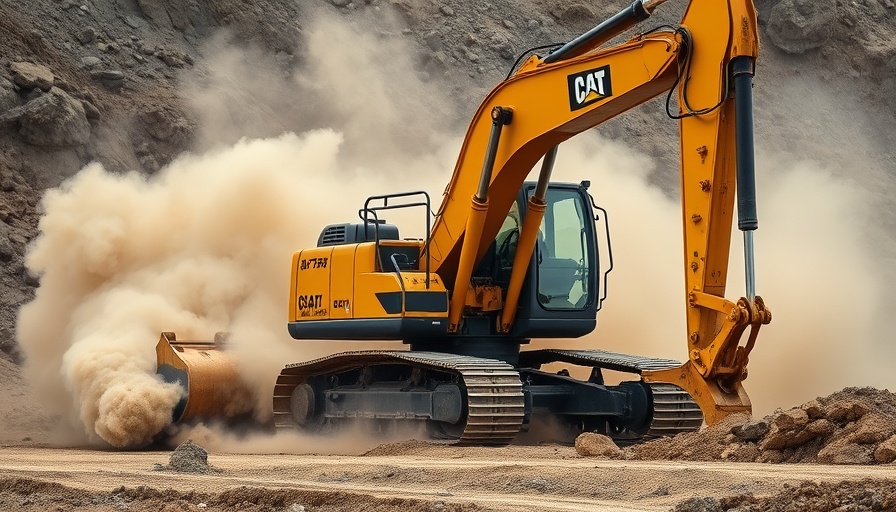
Hyundai and Develon Unveil Cutting-Edge Excavators: A Game Changer in Construction
At the recent Bauma trade show in Germany, Hyundai and its sister company, Develon, showcased revamped excavators that promise to redefine efficiency and safety in construction environments. The launch of the next-generation HX360L and HX400L marks a significant milestone—these are not just improvements on existing models, but a complete overhaul aimed at modernizing the crawler excavator landscape.
The Powerful Freight of Innovation
The HX360L and HX400L are set to be released in the European market soon, with the North American introduction scheduled for 2026. Hyundai’s commitment to innovation is evident in these machines' capabilities, powered by the new DX08 diesel engine. Operating at a maximum of 341 horsepower, it delivers an impressive 23% power increase while achieving an 8% improvement in fuel efficiency compared to older models.
Excavators with Enhanced Control and Safety Features
One of the standout aspects of Hyundai's new excavators is the implementation of full electro-hydraulic control for main pump flow and hydraulic output. This feature, combined with improved Rexroth hydraulic pumps and custom-built motors, ensures precision that contractors need for detail-oriented projects. For safety, features like the Smart Around View Monitoring system, which employs AI to detect personnel and objects around the excavation site, stand out as vital tools to reduce accidents and improve productivity.
Innovative Tech That Fits the Modern Contractor
As construction projects grow in complexity, excavators too must evolve. These new models offer premium leather seating with climate control options, multiple high-definition monitors for enhanced visibility around the machine, and several other amenities designed with operator comfort and safety in mind. The installation of a Radar Object Warning System is particularly innovative, as it detects nearby people and objects, issuing both audible and visual alerts.
Develon Expands Market Reach
Meanwhile, Develon has introduced its own line of next-generation excavators, featuring models like the 24-metric-ton DX240 (DX230 in external markets) and the 26-metric-ton DX260LC-9. With the same emphasis on safety and efficiency, Develon's excavators align closely with industry trends toward reliability and operator-centered design. Their innovative video presentations showcase the advanced capabilities of these models, capturing the attention of both contractors and enthusiasts alike.
Adapting to the Future of Construction
As the construction industry pushes forward, the adoption of next-gen machinery like those from Hyundai and Develon will be crucial in addressing labor shortages, increasing productivity, and improving site safety. The emphasis on technological integration offers a pathway towards a more efficient future.
Conclusion: Preparing for Market Changes
Those in the home service contracting industry should pay close attention to the advancements being made in excavation technology. As construction equipment evolves, contractors who understand these changes and are equipped with the latest machines will be better positioned to compete in an ever-changing marketplace. Investing in new technology is not just a matter of modernization; it’s about staying relevant in an industry that demands efficiency and safety.
It's essential for contractors and homeowners to stay informed about these developments. Building on this knowledge can lead to actionable insights that empower construction projects and elevate business offerings in an increasingly competitive market. To learn more about how these advancements can benefit you, consider joining discussions in forums or training sessions related to modern construction techniques.
 Add Row
Add Row  Add
Add 




Write A Comment